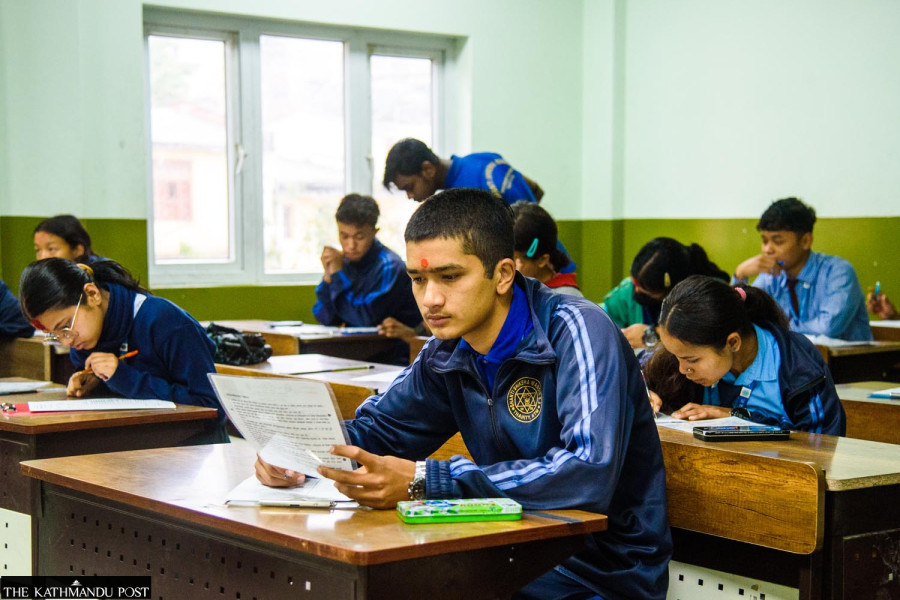Editorial
Get the basics right
Whatever the prime minister says, it is hard to drastically improve the flawed SEE system overnight.
In under four months, tenth graders all over Nepal will appear in the School Education Examination (SEE). This is a time for students to focus on final preparations. Sadly, hard work alone won’t yield better results when the schools and curriculum fail to cater to their needs. Every year, when the results are out, many students have to endure crushing failure. However, as in previous years, the authorities have failed to learn from their mistakes. Prime Minister KP Sharma Oli is making baseless predictions of a 70 percent pass rate in the upcoming SEE. How will this be achieved in a country where pass rates have for years hovered below 50 percent?
Among 464,785 students who appeared in the last SEE, only 222,472—47.87 percent—secured a Grade Point Average (GPA) above 1.60, which is necessary to study at a higher level. However, 242,313 students—52.13 percent—were categorised as non-graded. After the supplementary exams, over a third of them were graded, qualifying them to study in grade 11. Oli’s forecast is only plausible if the results improve by around 50 percent, which is unlikely.
The grading system was introduced in 2016 to reform the examination system, focusing less on marks and more on interactive learning. But the hangover of the old School Leaving Certificate (SLC) exams persists. While the system has been upgraded, the teaching and learning are still the same. Schools are grappling with a shortage of teachers for major subjects like Science, Mathematics and English. Rural provinces like Karnali have suffered the most and some schools are hiring under-qualified teachers to fill the gaps. With teachers unable to address their problems, students have no choice but to rely on rote learning. To cope, the government is focusing on extra online classes. But such online classes for school students hold only symbolic value.
In Nepal, fear has always been a tool for teaching and learning. Most schools do not foster an environment where students enjoy learning. This mentality also applies to how the education system views examinations like SEE. Students are put under pressure to perform well, as if it were a “do or die” situation. The shame of failure scars students for life. Some private schools take advantage of this fragile emotional state of students by enforcing mandatory tuition classes. Further, as schools in rural areas can’t complete the syllabus on time, it creates an opportunity for private tuition centres to generate profit as students migrate a few months before SEE to study in such centres. During this year’s SEE, over 500 grade 10 students across Bajhang were studying in tuition centres.
Schedule 8 of the constitution gives local units the authority to manage school education. But the lack of a Federal Education Act, a must to implement constitutional provisions, is a big hurdle towards this laudable goal. Among its various flaws, the controversial Education Bill, registered in Parliament last year, fails to establish minimum criteria for establishing schools. The government must realise that the basics must be fulfilled before setting lofty goals. There must be mechanisms to recruit qualified teachers and retain them. It is also imperative to update the pedagogy for courses such as BEd and MEd to produce quality teachers.
The SEE marks the culmination of over a decade of schooling. Therefore, it is unfair to blame the students who have trusted the system for long. The poor SEE results are a direct reflection of the system’s failure. Whether we have the SEE or the SLC, the flawed education system will continue to jeopardise the future of hundreds of thousands of young students.




 9.12°C Kathmandu
9.12°C Kathmandu














